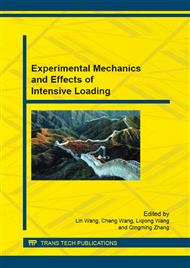p.296
p.302
p.311
p.316
p.326
p.335
p.341
p.345
p.349
ViBe with Adaptive Threshold Based on Energy Minimization
Abstract:
VIsual Background Extractor (VIBe) is a simple and effective background subtraction model, it is important to choose the threshold according to different environments. A new method based on the VIBe is presented which uses the adaptive threshold. We give a new description of the similarity degree without threshold, and then use the energy minimization model to combine the spatial information and show that dynamically choosing threshold in our kernel estimates at each individual pixel can significantly improve results. To compare with the traditional VIBe algorithms, a synthetic test SABS and a real world test I2R are used. Experiment shows that the presented method is on average 10% better than the traditional VIBe in accuracy.
Info:
Periodical:
Pages:
326-334
Citation:
Online since:
August 2015
Authors:
Keywords:
Price:
Сopyright:
© 2015 Trans Tech Publications Ltd. All Rights Reserved
Share:
Citation:


